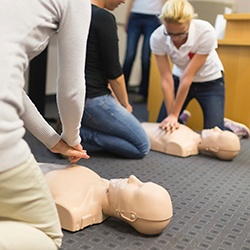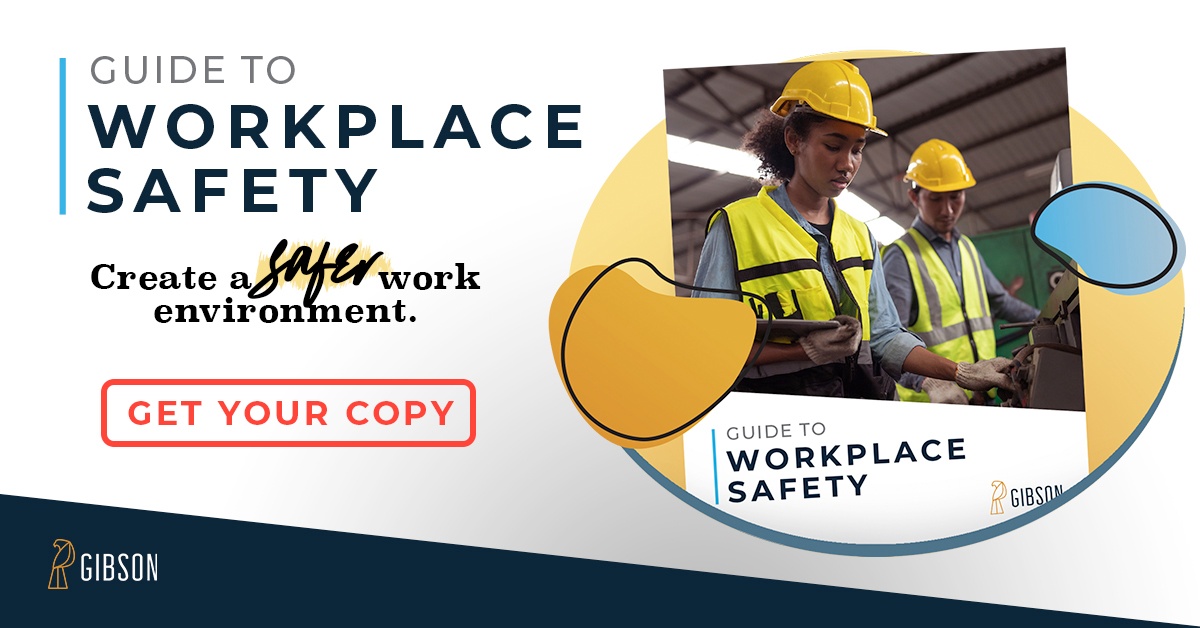 Even in a seemingly safe environment such as an office, accidents can – and do – occur. When you think of accidents, your mind might jump to major incidents and emergencies. But don’t overlook the smaller injuries. Cuts, scrapes, and burns can also impact your workforce and their productivity. Having CPR and first aid trained employees can make a substantial difference in your ability to maintain a safe work environment.
Even in a seemingly safe environment such as an office, accidents can – and do – occur. When you think of accidents, your mind might jump to major incidents and emergencies. But don’t overlook the smaller injuries. Cuts, scrapes, and burns can also impact your workforce and their productivity. Having CPR and first aid trained employees can make a substantial difference in your ability to maintain a safe work environment.
Trained employees will be able to respond more quickly and effectively when medical emergencies occur. In these situations time is critical! But even with the smaller injuries, having employees who are educated and prepared to respond can help get individuals treated and back to work. In fact, 25% of all emergency room visits can be avoided with basic first aid and CPR certification.
This training will educate employees to be more prepared and responsive in dangerous situations and medical emergencies. Staff become more aware of their surroundings and more likely to spot potential hazards – which aids in developing a safety culture.
Cardiac Arrest
Whether you’re in an office setting, on a construction site, or working in a factory - sudden cardiac arrest (SCA) does not discriminate. It can strike anywhere. And it represents 13% of all workplace deaths. Many of these deaths occur because of the lack of training - others in the workplace are not prepared to respond.
Many people think they will only make things worse if they step in to help, so they wait for the EMS responders to arrive. But the survival rate drops significantly for victims who have to wait for treatment. It only takes 4-6 minutes for irreparable damage to occur after SCA.
If you have CPR certified employees, they can step in and start compressions. Though CPR on its own is nowhere near as effective as using an automated external defibrillator (AED) or treatment from emergency personnel, it can help buy the victim time.
AED costs may seem like a barrier to having one onsite, but the use of an AED can be the difference between life and death. In most cases, defibrillation plus CPR is the only way to restore a victim’s heart rhythm. The survival rate of individuals suffering from SCA outside a hospital is approximately 10%, according to the American Heart Association. But the use of an AED can drastically increase those rates.
Keep Updated
Proper training is the first step. The second step is to ensure your equipment and supplies, as well as training, stay up to date.
The retention rate of first aid training is only a short 6-12 months! In order for employees to retain the skills, they need to have refreshers and go through recertification. This does not have to be as much of a hassle as it sounds. There are many ways to keep the training information fresh in your employees’ minds between recertification courses.
- A short practice session with small groups every other month would give your employees a chance to refresh their skills and learn new first aid techniques.
- Posting or sharing information on specific first aid topics in breakrooms, by email, social media, or stories from the news of how people made a difference by knowing first aid would also get your employees thinking about their training.
- Consider sending one person, or a small group of employees, to get certified as an instructor. They would then be able to lead review sessions and host recertification classes for employees. This generally costs less in the long term and provides a more convenient way to get employees trained, eliminating the need to coordinate schedules with an outside instructor.
Keeping your supplies properly stocked and checking equipment regularly is also a major part of staying safe. First aid kit should be examined regularly to replace expired items or those supplies that have been used up.
AEDs do have shelf lives, even when they have not been used. If your workplace has one, check it often to make sure it is in proper working order. Each device is different, so follow the manufacturer’s recommendations for proper maintenance and inform employees on where to obtain the correct information on servicing. Check battery levels as you may need to replace the charge pack in your device. The pads themselves also have expiration dates. If your AED is getting old, you may also consider exploring the newer models available as the technology may have improved.
The cost of first aid and CPR training for your workforce is minimal compared to the benefits it can bring. Trained employees can help save lives.




